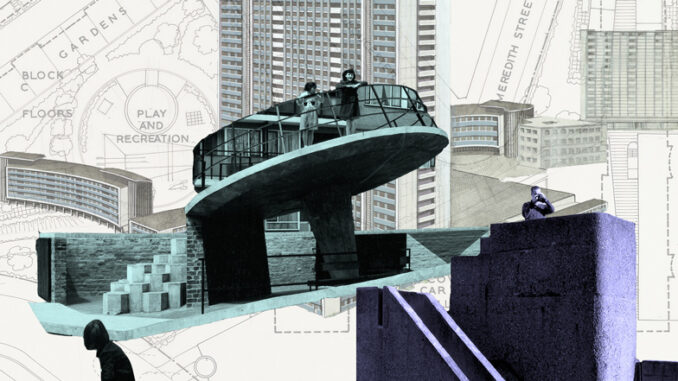
What is a Brutalist playground without its dense, concrete substance and its post-war, social housing mainland? Assemble and Simon Terrill present a sculptural composition integrating three separate playground designs that were no longer in physical existence. They have been abstracted from different housing estates in London and converted into a reconstituted foam material. The sculptures lift these historical structures from the archives into an interactive gallery space, away from the demise of social housing as a whole, giving them a new lease of life out of which to further wring ideas. The artists state that they are inquiring into the theme of risk in play, but assert the exhibition is an open experience (it coincides with a series of talks at RIBA looking at the history of playgrounds and the state of play, but also the history of concrete and social housing). Thus, it unfolds ambiguously whether risk regards child’s play, adult’s play or the designer of a play-space.
In their salvaging of this weighty form, we are given a soft room that is hard: shoes are taken off before entering because of its unaggressive surfaces, but its bounce is firm and pushes back at a monumental scale. Perhaps by replacing concrete they have taken the risk out of the design, or perhaps it has simply changed the options for physicality. In foam, the Brutalist playground shows a resemblance between the geometric volumes of both soft play and the Brutalist style in general – you can slide, you can hide, you can build with loose pieces, you can view and follow its lines. It has no specified purpose. At most, it might suggest certain ideas for activity; so – what to do?
Experiencing the foam fun as an adult, I found it relaxing and intriguing, though my activity was of a different quality to the focused yet unaware play of the kids. Here, the exhibition is at once all too open and not quite open enough. It cannot help but re-attach itself to social housing issues of today, yet without at all remarking on them. The brutal playfulness cuts through the image of a pacified landscape of new unaffordable housing that manipulates commercial behaviour. The mystery is somewhere in between that overly-designed, activity-controlling space, and abandoned or badly organised space which by chance might capture the imagination. How can you design something that obscurely invites its user without assuming its uses, allowing them to imagine it themselves? Who has the power to do this and to what ends? By inviting you to be in this architecture, this exhibition gives you a physical experience which meets you intimately, and from there on depends much on age, company and interests.
Until 16th August 2015
By Lily Glasser

Leave a Reply